Ever been called birdbrained? Take it as a compliment! While birds have a reputation for being unintelligent, there are numerous species that are incredibly smart and intuitive. In England in particular, there are several types of birds that score high on the intelligence scale. Check out the top seven smartest birds flying around England.
1. Raven
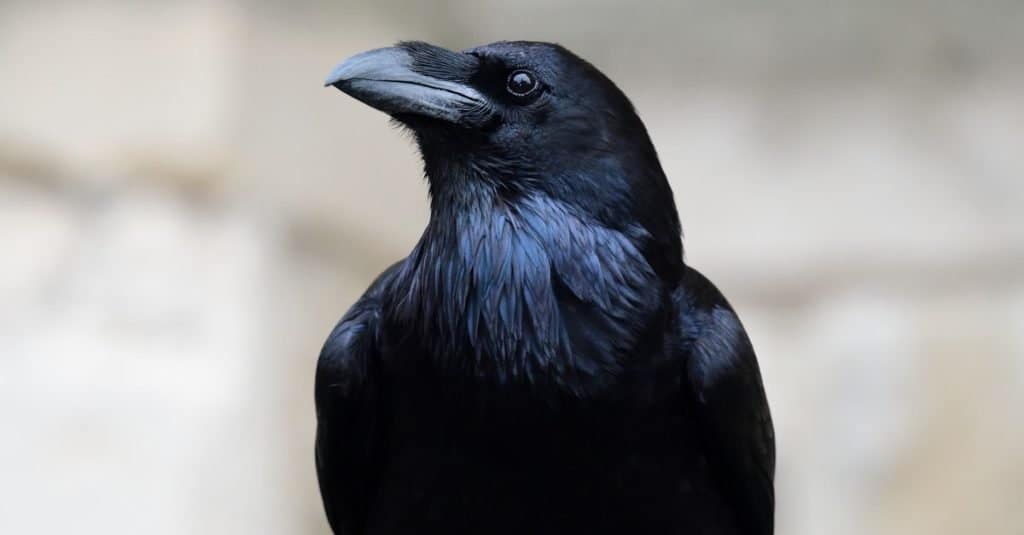
A group of ravens is called an unkindness.
©iStock.com/Tom Meaker
The common raven (Corvus corax) is the biggest member of the Corvidae family and is extremely intelligent. Birds in this family (known as corvids) are incredibly perceptive and have great problem-solving skills. Ravens in particular have fully developed cognitive skills by just four months old, and adults have intelligence that can rival apes.
Ravens can plan ahead and learn from past experiences, which allows them to problem-solve in new situations based on extrapolations of the possibilities. They also have the ability to recognize mental states within themselves and others, and they can understand that others’ mental states may differ from their own.
They also have great memories — and will hold a grudge. One study found that ravens were friendlier toward people who gave them snacks fairly than to those who had cheated them out of a treat in the past. While ravens aren’t as common as they used to be due to persecution, there are an estimated 10,000 breeding pairs in the U.K.
2. Crows
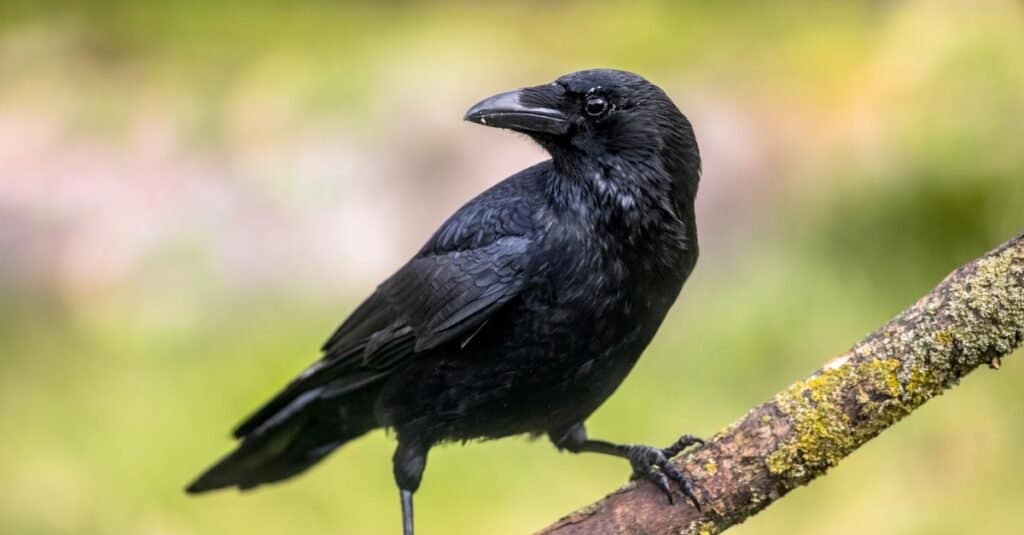
In addition to eating fruit, crows enjoy carrion treats, as well as insects, seeds, and eggs.
©Rudmer Zwerver/Shutterstock.com
Both the carrion crow (Corvus corone) and hooded crow (Corvus cornix) can be found traversing England’s skies — and robbing British gardens. Shy carrion crows will cautiously explore gardens and, if they determine it is safe, return regularly to steal fruit. The confident hooded crow is much more tolerant of humans and can be found scavenging in streets.
Until 2002, hooded crows were considered the same species as carrion crows, as they exhibit similar traits and will interbreed. While they are closely related, they are now classified as different species. Hooded crows have grey bodies, while carrion crows are solid black in color. Beyond physical differences, hooded crows are more social in their eating habits, while carrion crows are generally solitary.
Crows, like ravens, are members of the corvid family, and they exhibit the same problem-solving abilities. Researchers say crows are as good at reasoning as a 7-year-old child! They use tools to obtain food and even understand the concept of water displacement. Even complex puzzles are no problem for them, and they will use various implements to solve them. They can also recognize human faces, and like ravens, have no problem holding a grudge and playing favorites. With over one million breeding pairs of crows in the U.K., there is no shortage of these brainy birds.
3. Rook

In folklore, rooks are often associated with wisdom, mysticism, and intelligence.
©LFRabanedo/Shutterstock.com
Yet another member of the Corvidae family, the gregarious rook (Corvus frugilegus) is said to be the most astute of the corvids. They are distinguishable from other corvids by a featherless, whitish area around their bills. They may be smart, but they aren’t always pretty — rooks often appear disheveled and scruffy with untidy plumage.
These incredibly social birds are often seen in large flocks (called congregations or parliaments), or nesting in large colonies called rookeries. Some rookeries contain thousands of rooks! Rooks are rare in big cities and towns, but commonly found in open countryside and farmland across England. These birds will also often feed alongside the smaller jackdaw next to roads or in fields, eating worms, nuts, grains, and insects.
Rooks will put their minds together and use teamwork to solve problems. They are well known for removing bird feeders and dropping them to the ground for easier access to the seeds within. They will also move feeders closer to other rooks to make it more convenient for them to share food.
4. Western Jackdaw
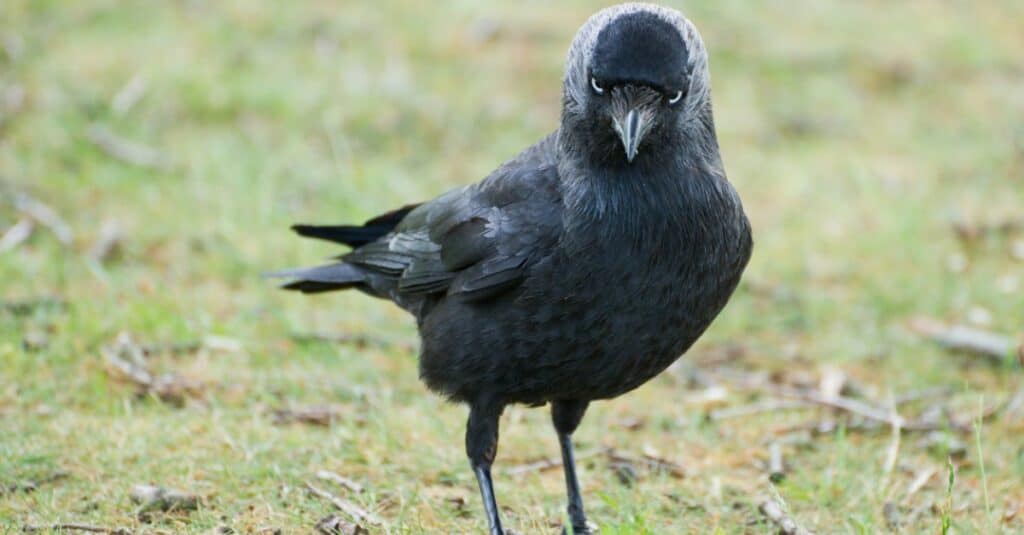
Jackdaws communicate with their eyes and love making eye contact — even with humans!
©iStock.com/miksov
Like rooks, western jackdaws (Coloeus monedula) are social birds. These cavity nesters roost communally in chimneys, buildings, and tree holes. They aren’t picky about who they hang out with, and they’ll form flocks with rooks, starlings, and even carrion crows. Jackdaws are the smallest of the corvids, and are easily identified by their call, which sounds like a loud “tchack.” Jackdaws are extremely adaptable and loyal. They form strong bonds with their mates and will stay together, even through years of unsuccessful breeding.
They also pick up new tricks and skills very easily. Italian thieves once trained one domesticated jackdaw to steal money from ATMs. It should come as no surprise then that they are very adept at gaining access to food, even from secure feeders. Like other corvids, they can also identify individual human faces and form bonds in captivity.
5. Red-Billed Chough
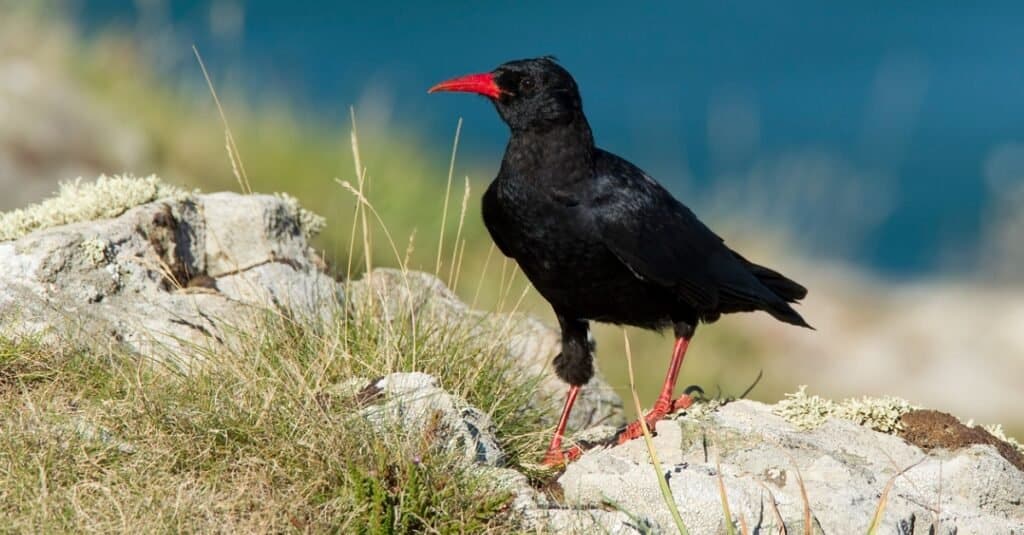
Choughs are acrobatic flyers and perform elaborate aerial displays of swooping and diving.
©iStock.com/birdsonline
While choughs (Pyrrhocorax pyrrhocorax) are corvids, they are easily distinguishable from their brethren by their red bills and legs. These distinctive birds congregate on the west of the British Isles, where they live near sea cliffs and around rocky coasts. Choughs are collaborative birds that will work together to build their nests communally.
While choughs primarily dine on insects and larvae, they also use their intelligence to eat mollusks. They will use one mollusk as a tool to break open the shell of another. However, only the luckiest birdwatchers will get a chance to see this. Choughs are the rarest corvid in the U.K., with only 335 breeding pairs in Great Britain, and approximately 120 pairs on the Isle of Man.
5. Common Magpie
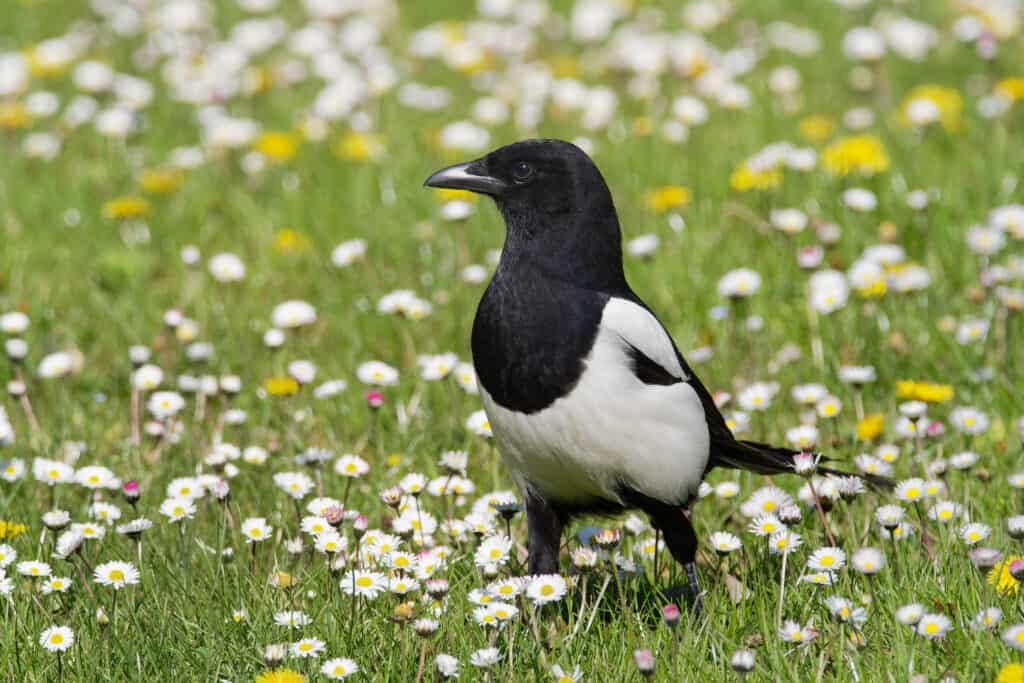
While a magpie is part of the corvid family, the distinctive white feathers on its wings and chest make it stand out.
©Michal Pesata/Shutterstock.com
Magpies (Pica pica) are incredibly smart birds, and they want you to know it! These noisy birds are constantly chattering, and can even imitate human speech. But they aren’t all talk. The common magpie’s brain-to-body mass ratio is second only to humans, and it’s equivalent to that of dolphins and great apes. They can pass the mirror test and recognize their own reflections, which only four other animal species can do.
Magpies hold group funerals when a member of their flock dies, where they will cry and squawk. They are also fastidious in their parenting, using utensils to cut food into proper portions before giving it to their young. Found all across the U.K. with the exception of the Scottish Highlands, these cheeky birds are one of the most intelligent birds in England.
7. Wood Pigeon

The wood pigeon is the largest and most common pigeon in England.
©iStock.com/Pascale Gueret
Finally, a smart bird that isn’t in the corvid family! While wood pigeons (Columba palumbus) have a reputation for being slow, they are actually incredibly bright birds. Like magpies, pigeons can pass the self-recognition mirror test. They can also recognize letters of the alphabet and distinguish between different humans, even in photographs and paintings.
One group of researchers trained pigeons to tell the difference between paintings by Monet and Picasso. They found that the birds could discriminate between cubist and impressionist painting styles. In a subsequent study, the researchers found that if human college students underwent the same training, their ability to distinguish between different painters was comparable to that of the pigeon. With over five million breeding pairs of wood pigeons in the U.K., these clever birds of the Columbidae family are common in both the countryside and cities (where they can become quite approachable and tame).
Summary of the Smartest Birds in England
| Common Name | Scientific Name | |
|---|---|---|
| #1 | Raven | Corvus corax |
| #2 | Crows | Corvus corone (Carrion Crow) and Corvus cornix (Hooded Crow) |
| #3 | Rook | Corvus frugilegus |
| #4 | Western Jackdaw | Coloeus monedula |
| #5 | Red-Billed Chough | Pyrrhocorax pyrrhocorax |
| #6 | Common Magpie | Pica pica |
| #7 | Wood Pigeon | Columba palumbus |
The photo featured at the top of this post is © Marcin Perkowski/Shutterstock.com
Thank you for reading! Have some feedback for us? Contact the AZ Animals editorial team.







